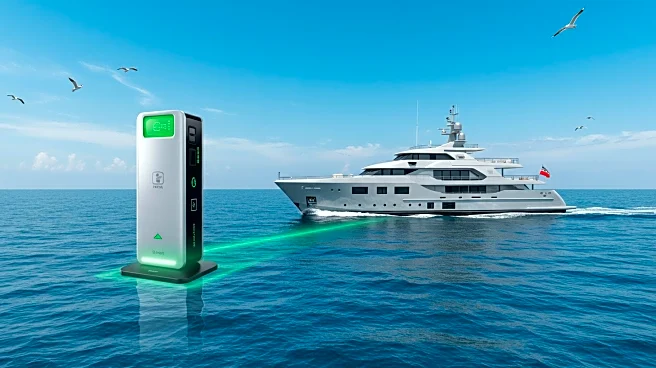What's Happening?
Tokyo Kisen Co., Ltd., in collaboration with Marindows Inc., has initiated Japan's first pure battery-powered electric vehicle (EV) harbor tugboat development project. The tugboat will operate in the ports of Yokohama and Kawasaki, aiming to achieve zero greenhouse gas emissions in line with the Carbon Neutral Port policy. This project builds on the experience gained from operating the series-hybrid electric-powered tugboat 'TAIGA,' which was equipped with a 2,486 kWh battery. The new tugboat will feature a large-capacity onboard battery system of 6.66 MWh and MW-class fast chargers, enabling truly zero-emission operations. The project is scheduled for completion in 2030, with detailed feasibility studies and design phases planned from 2025 to 2027, followed by construction starting in 2028.
Why It's Important?
The development of a pure battery-powered EV harbor tugboat represents a significant advancement in maritime technology and environmental sustainability. By reducing emissions in port operations, this project supports global efforts to combat climate change and promotes cleaner air in urban areas. The initiative could set a precedent for other ports worldwide, encouraging the adoption of similar technologies. The project also highlights Japan's commitment to innovation and leadership in green technology, potentially influencing international maritime policies and practices. Stakeholders in the maritime industry, including port authorities and shipping companies, stand to benefit from reduced operational costs and improved environmental compliance.
What's Next?
The next steps involve conducting a detailed feasibility study and concept design in 2025, followed by basic and detailed design phases in 2026 and 2027, respectively. Construction of the vessel and fast-charging infrastructure is expected to begin in 2028, with commercial operations slated for 2030. Stakeholders, including environmental groups and maritime industry leaders, may closely monitor the project's progress and outcomes. Successful implementation could lead to increased investment in similar technologies and further policy developments supporting carbon-neutral initiatives in the maritime sector.













